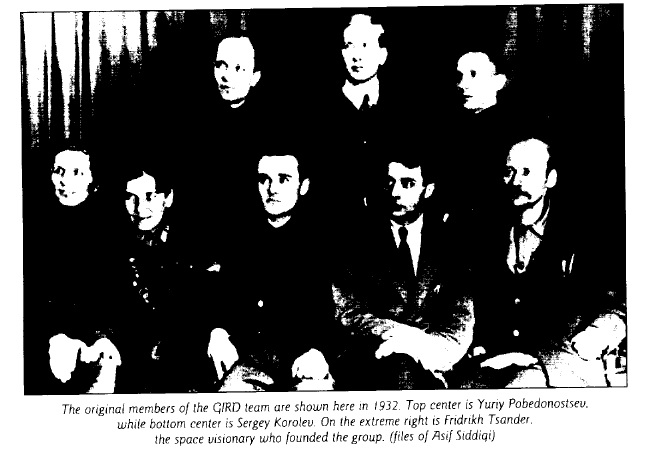 |
GIRD
In November 1931, a group of students, technicians and aeronautical engineers formed an officially sanctioned and state-supported rocket society called "Group for the Investigation of Reactive Motion" (GIRD, from the Russian Gruppa po Izucheniyu Reaktivnogo Dvizhenia) in Moscow, as a unit of a Soviet paramilitary youth aviation technical organization called Osoaviakhim ("Society for Assisting Defense and Aviation and Chemical Construction in the USSR"). Osoaviakhim ran gliding competitions, radio training schools, gunnery training centers and related activities. The rocket society was considered to have potential military applications.
Moscow GIRD's chairman was twenty-four year old Sergei Korolev, who would eventually rise to become the Soviet Union's chief rocket constructor, its counterpart to Wernher von Braun. In 1957 he would oversee the launch of both the world's first intercontinental missile and Earth's first artificial satellite. Other members included Boris Cheranovsky, an aircraft designer who specialized in elliptical flying wings; Yuri Pobedonostsev, a ramjet expert; and Fridrikh Tsander, an engineer and theoretician. In many ways, MosGIRD was a Soviet counterpart of Theodore von Kármán's later GALCIT rocket group at Cal Tech, and von Kármán would later cross paths with both Korolev and Pobedonostsev.
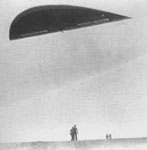 |
Cheranovsky BICh-1 semi-elliptical flying wing glider, 1926 |
While MosGIRD is mostly remembered today for its pioneering work in liquid-fuel rockets, it conducted other interesting experiments as well. One of the group's earliest projects involved design studies and flight tests of small-scale ramjet engines. In order to accelerate the ramjets to the high speeds required for them to function, they were designed in the form of special artillery shells which could be fired from a cannon.
In line with Tsander's theories on the high energy content of metallic propellants, the ramjet's fuel charge was composed of grains of phosphorus mounted in a basket made of an alloy called "Elektron" - about 85% magnesium and 15% copper - which was intended to burn along with the phosphorus, producing thrust. The burning copper would have produced a vividly glowing green exhaust trail.
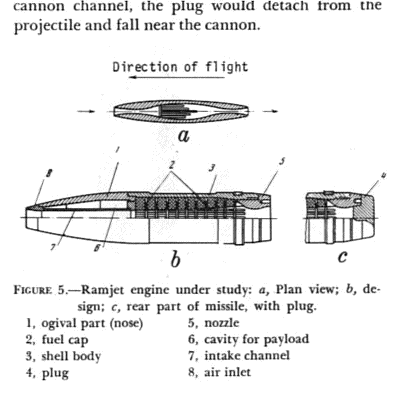 |
GIRD 76mm metallic-fuelled ramjet artillery shell schematic, 1933 |
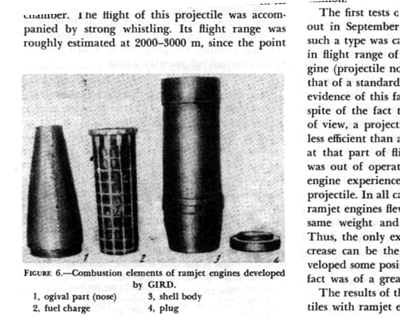 |
Internal construction of the shell, showing basket-like magnesium/copper/phosphorus engine components |
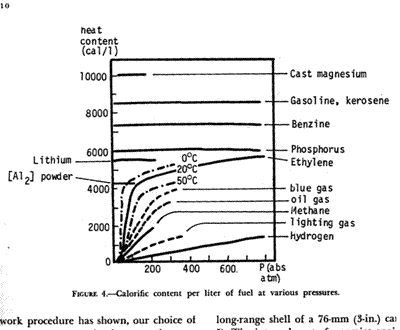 |
Chart showing relative energy content of fuels. Magnesium was considered most promising |
First test shots were made in September 1933 and continued through 1935. GIRD claimed that these were the first airbreathing engines of any kind to achieve supersonic velocity, many years in advance of other rockets and well over a decade before jet aircraft reached such speeds.
The success of the experiments led to plans for design of a metallic fuelled ramjet missile with the intent of exploring potential military applications.
GIRD also experimented with a series of winged rocket-powered projectiles, including some which were equipped with early delta wings.
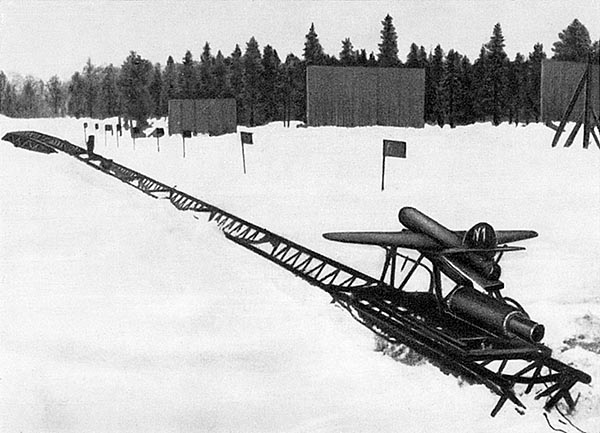 |
Winged Rocket 212, designed by Korolev, on launch rail, 1936 |
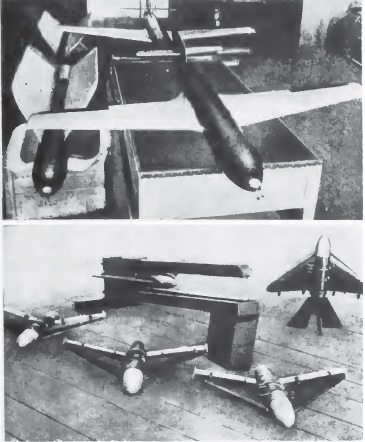 |
GIRD winged rockets of the late 1930s |
Is it possible that GIRD's pre-war experimentation with these highly distinctive technologies -- metallic-fuelled ramjets and rockets as well as winged cruise missiles -- had a bearing on the reaction of western intelligence services to the Ghost Rocket and Green Fireball affairs?
See: Ghost Rockets
See: Green Fireballs
See: 1948 Scientific Analysis of UFO Debris
Sources
"Early Experiments With Ramjet Engines in Flight," and "First Rocket and Aircraft Flight Tests of Ramjets," Yuri A. Pobedonostsev, in Frederick C. Durant III and George S. James, eds., Smithsonian Annals of Flight No. 10, First Steps Toward Space: Proceedings of the First and Second History Symposia of the International Academy of Astronautics at Belgrade, Yugoslavia, 26 September 1967, and New York, U.S.A., 16 October 1968 (Washington, DC: Smithsonian Institution Press, 1974)